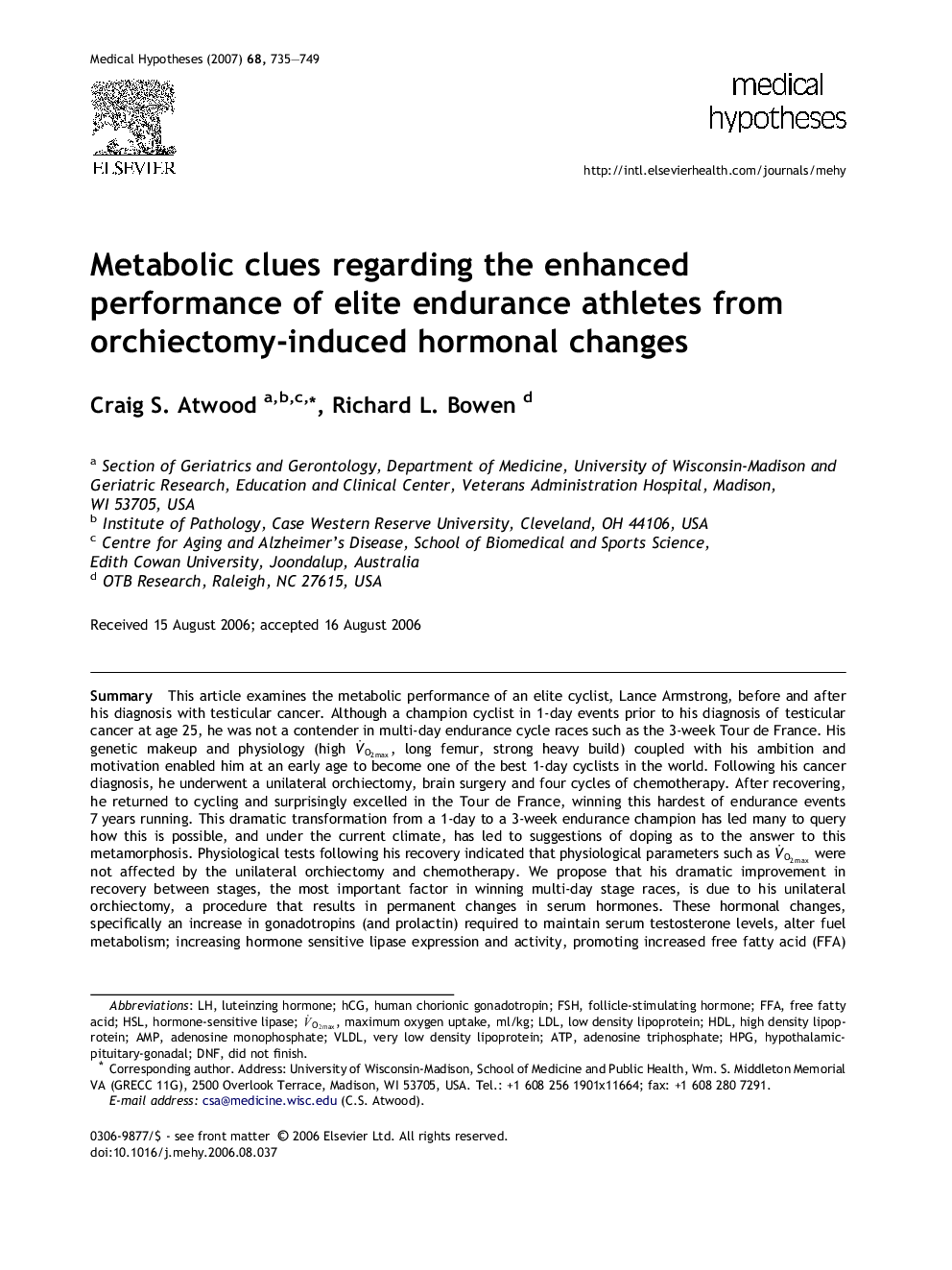| کد مقاله | کد نشریه | سال انتشار | مقاله انگلیسی | نسخه تمام متن |
|---|---|---|---|---|
| 2492439 | 1115108 | 2007 | 15 صفحه PDF | دانلود رایگان |

SummaryThis article examines the metabolic performance of an elite cyclist, Lance Armstrong, before and after his diagnosis with testicular cancer. Although a champion cyclist in 1-day events prior to his diagnosis of testicular cancer at age 25, he was not a contender in multi-day endurance cycle races such as the 3-week Tour de France. His genetic makeup and physiology (high V˙O2max, long femur, strong heavy build) coupled with his ambition and motivation enabled him at an early age to become one of the best 1-day cyclists in the world. Following his cancer diagnosis, he underwent a unilateral orchiectomy, brain surgery and four cycles of chemotherapy. After recovering, he returned to cycling and surprisingly excelled in the Tour de France, winning this hardest of endurance events 7 years running. This dramatic transformation from a 1-day to a 3-week endurance champion has led many to query how this is possible, and under the current climate, has led to suggestions of doping as to the answer to this metamorphosis. Physiological tests following his recovery indicated that physiological parameters such as V˙O2max were not affected by the unilateral orchiectomy and chemotherapy. We propose that his dramatic improvement in recovery between stages, the most important factor in winning multi-day stage races, is due to his unilateral orchiectomy, a procedure that results in permanent changes in serum hormones. These hormonal changes, specifically an increase in gonadotropins (and prolactin) required to maintain serum testosterone levels, alter fuel metabolism; increasing hormone sensitive lipase expression and activity, promoting increased free fatty acid (FFA) mobilization to, and utilization by, muscles, thereby decreasing the requirement to expend limiting glycogen stores before, during and after exercise. Such hormonal changes also have been associated with ketone body production, improvements in muscle repair and haematocrit levels and may facilitate the loss of body weight, thereby increasing power to weight ratio. Taken together, these hormonal changes act to limit glycogen utilization, delay fatigue and enhance recovery thereby allowing for optimal performances on a day-to-day basis. These insights provide the foundation for future studies on the endocrinology of exercise metabolism, and suggest that Lance Armstrong’s athletic advantage was not due to drug use.
Journal: Medical Hypotheses - Volume 68, Issue 4, 2007, Pages 735–749